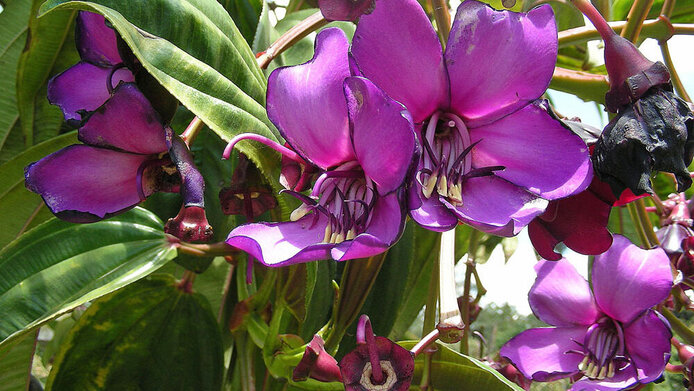These differences are in line with the different pollinators these plants favor . “Most species do use bees and pollination by vibration – also widespread in Europe – which involves bees releasing pollen from the plant by means of a vibrating movement. When it comes to the Merianieae, however, evolution has resulted in some of the species switching to birds, mice and bats as pollinators,” Schönenberger explains. “That's what makes this group so interesting for our research.”
Field research in the cloud forests of the Andes
Field research in Ecuador and Costa Rica constituted a large part of the project. “It was all about finding, studying and observing the different plant species,” reports Dellinger. “In the course of the expeditions we were able to document 30 species in the field.” Including loans of preserved flowers from existing collections, the researchers were able to collect morphological data, i.e. data on the shape and structure of the flowers, from 140 species. In some cases, the researchers extracted plant DNA to determine the relationships between plants. In individual experiments, specimens were even pollinated by hand.
According to existing theories, a plant species will adapt to the most efficient pollinator group in the course of its evolution. Analysis of the data collected on the Merianieae shows that this adaptation is strongly influenced by the prevailing climate. In many cases, the decisive factor is altitude: “Bee pollination is predominant in the warm and dry climates of the lowlands, but also in sunny and wind-protected locations higher up. In the mountain forests and cloud forests, on the other hand, the pollinators are very often hummingbirds, and also other vertebrates,” Dellinger notes. “In areas with high humidity one finds few bee-pollinated species.” While the results also suggest that climate change has an influence on this system, this is a question that requires more research.








